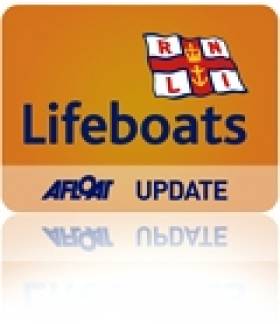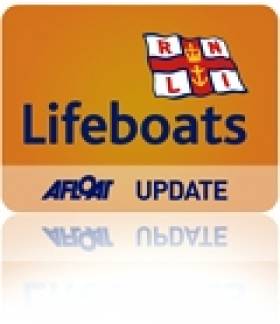Displaying items by tag: Atlantic 85
First Outing for Skerries RNLI's New Lifeboat
#RNLI - Skerries RNLI recorded its first service by its new inshore lifeboat on Sunday afternoon (21 April). SEE VIDEO BELOW
The North Co Dublin lifeboat station's volunteer crew was requested to launch following a report that a vessel was adrift off Bettystown beach.
Crew members, alerted by their pagers, launched their new Atlantic 85 lifeboat Louis Simson within 10 minutes.
It was quickly established that the owner of the vessel was on shore. With the potential for the personal water craft (PWC) to pose a danger, the decision was made to locate it and return it to the beach.
Once on scene, a volunteer crew member was put on board the PWC and brought the vessel safely to shore.
Speaking following the callout, Skerries RNLI volunteer crew member Emma Wilson said: "The visibility was good today, but it was something quite small we were looking for, so being able to have an extra crew member on board our new lifeboat really made a difference during the search."
Geoffrey was a scuba diving instructor and working in Thailand when the devastating 2004 tsunami struck the island of PhiPhi. He helped save many lives during that time by recovering people from the water and bringing the injured for urgent medical assistance. He also returned to the area to help bring comfort to many families who had lost loved ones by helping to get official identification for those lost in the tsunami. Sadly Geoffrey died shortly after this at the age of 32 and his parents wanted to do something to recognise the work he did in saving lives. Along with other projects they have funded this Atlantic 85 lifeboat in Geoffrey's name.
During the ceremony Roger spoke about Geoffrey and the reason they funded a lifeboat in his memory. "It is very fitting given that Geoffrey saved people from the sea that we are here today to dedicate and hand over this Atlantic 85 to the Red Bay station in Geoffrey's memory. In the same way that he saved people from the sea we are confident that those trained and skilled with this craft will carry out the same courageous acts and rescue people around these shores.
This project has given us something positive to focus on and we wish to stay in very close contact with the station. Geoffrey loved the sea and the natural environment and when we first saw this lifeboat we knew it would be like him – big, powerful, a little bit noisy and very confident. From our very first visit to Red Bay we knew that this was the place for the lifeboat to be stationed in his memory."
In another special tribute well known singer Frances Black, whose father was from Rathlin Island spoke of her love for the area and thanked the Colmers for their gift in Geoffrey's memory. Frances said, "When we were children we used to spend a lot of time up and around this area travelling back and forth on the seas around Rathlin Island. When we were young we thought it was really exciting that the waves were the size of houses but as we got older we became very aware that the seas were quite treacherous in this area, beautiful as it is.
The RNLI have saved many lives up and around this area. To save one life is a miracle but to save the amount of lives they have is fantastic. The work the volunteers do and the dedication that they have is absolutely phenomenal. I would like to say a very special thank you to both Judith and Roger. It is very important we remember the legacy that Geoffrey has left on this wonderful day. He would be so proud of his family and of what they have done today."
Frances then gave a beautiful accapella rendition of the well known song Bright Blue Rose, which she dedicated to Geoffrey.
Red Bay Lifeboat Operations Manager Alan Murphy accepted the lifeboat into the care of the station, "The lifeboat is the main piece of equipment provided by the RNLI and in many cases this is thanks to the generosity of people like Rogerand Judith Colmer, to whom we are extremely grateful. We at Red Bay are very proud of our new lifeboat and will keep the boat well maintained and always ready to launch when requested."
The lifeboat was named with a bottle of champagne poured over the side of the boat. The honour was carried out by Judith and Roger's grandson Edward.






























































